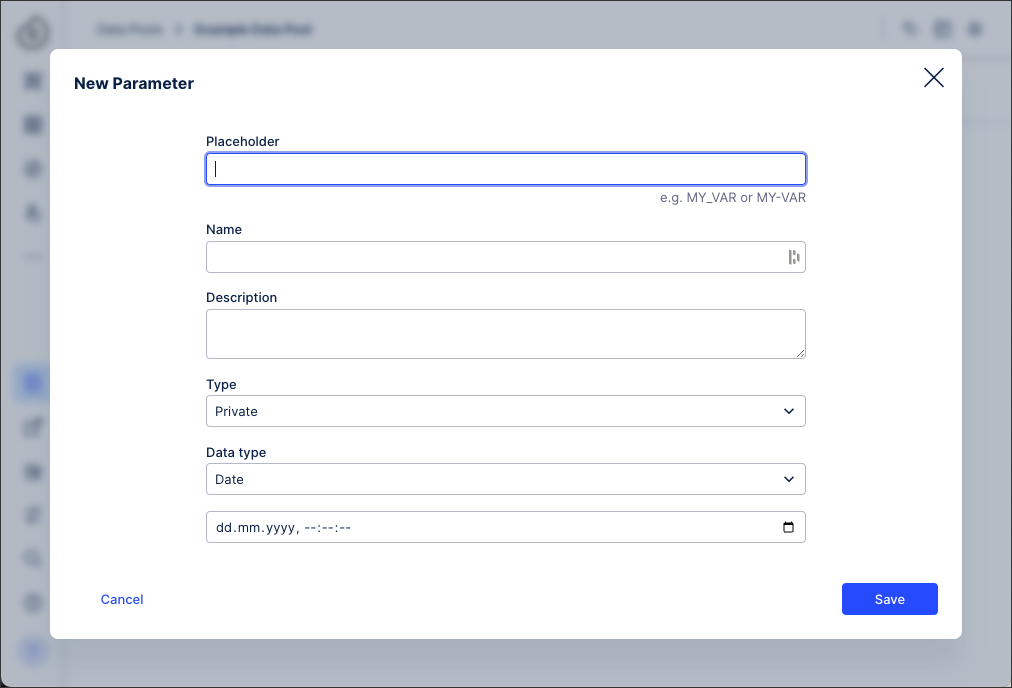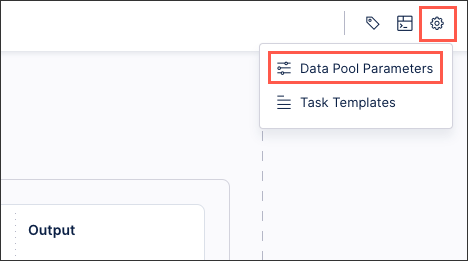Data pool parameters
Data pool parameters allow you to define reusable static or dynamic parameters within a task. They are created and managed on a data pool level.
In addition to data pool parameters, you can also create reusable task parameters. For more information, see: Creating data job task templates.
And for more information about tasks, see: Extracting and transforming data.
Data pool parameter types
You can create three types of data pool parameters: Private (static), public (static), and dynamic:
Private (static / default): Only admins of the data pool can see and edit this parameter.
Public (static): Admins of the data pool can see and edit this parameter, with other users being able to edit the parameter when installing a process connector from the Marketplace.
Dynamic: Only visible to admins of the data pool and dynamically generated from the existing data.
If dynamic data pool parameters are used, then three additional fields are available: table, column, and operation type. These fields define how the parameter value gets calculated.
The following three operation types are possible with dynamic data pool parameters:
FIND_MAX: The parameter will be set to the maximum value of the specified column of the specified table.
FIND_MIN: The parameter will be set to the minimum value of the specified column of the specified table.
LIST: The parameter will be set to a list of the distinct values of the specified column of the specified table.
Creating and managing data pool parameters
To create a data pool parameter from your data pool diagram:
 |
Click Additional Settings - Data pool parameters.

Click New Data Pool Parameter.
Provide the parameter details:
Placeholder: This is the technical name for the parameter and must be unique and contain no spaces or special characters. The placeholder is how the parameter can be referenced in other assets by using the syntax <%placeholder%>.
Name: This is a reference only, helping you to identify the parameter as a data pool admin. This name is not exposed in your views.
Description (optional): This allows you to add further information about the parameter and how it is used.
Type: This controls who can see and use the parameters and whether it is a static or dynamic parameter. You can choose between Private, Public, and Dynamic here, see: Data pool parameter types.
Data type: Choose between date, double, double list, integer, integer list, text, and text list.
Default value: Provide the default value for your variable, whether text or numerical.
Click Save.
The data pool parameter can now be referenced in other data integration assets.
Editing or deleting data pool parameters
You can edit or delete parameters at any time, however doing so removes the central reference to that placeholder. As such, any uses of that placeholder within tasks will need to be edited manually for the changes to take effect.
To edit or delete a data pool parameter, click Options:
 |